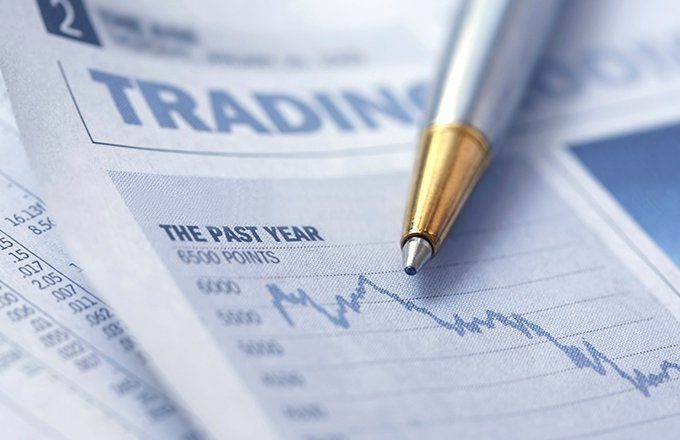Becoming a successful trader is all about finding opportunities to pursue strong returns, while also taking active measures to avoid the risks that are inherent to trading. If a trader can continue to receive financial leaps forward without needing to take many steps back, their wealth will continue to grow over time.
While the principles mentioned above are easy to recognize, many traders—especially new traders—find themselves having difficulties maintaining the careful balance between risk and reward. In pursuit of strong returns, they find themselves holding unnecessarily risky stocks, and, in the end, they end up losing money.
Fortunately, there are quite a few things that even new traders can do to maintain this careful balance. As long as you are willing to do your research, pay close attention to your positions, and be ready to accept at least some losses, you can become a successful trader that earns more than 10 percent per year.
In this article, we will discuss six trading strategies that traders can use to balance better their risk to return ratio. Though these strategies may not be foolproof on their own, they can enhance your current approach to the stock market and help you get pointed in the right direction.
1. Diversification

Diversification is one of the most frequently cited trading principles on Wall Street, and for a good reason. By holding positions in a wide variety of stocks and a wide range of assets in general, you can immediately decrease the probability of a single event (such as a disappointing earnings report) destroying your entire portfolio.
There are many different ways that you can potentially diversify your holdings. One of the easiest methods of doing so is to invest directly into index funds, such as funds connected to the S&P 500 or the Dow Jones Industrial Average (DOW). This will enable you to enjoy the general rise of the market as a whole, without the need for relying on one specific stock performing well. Investing in bonds, cryptocurrency, commodities, and various other instruments can also help protect you from some of the risks associated with a bearish market.
2. Buy Low, Sell High
While this old mantra may sound cliché, it has certainly proven to be quite reliable. As long as you take active measures to buy stocks that currently appear to be underpriced and sell stocks that appear to be overpriced, you will consistently be moving in a positive direction as time goes on.
Buying low and selling high can sometimes be quite tricky because traders are unsure were “high” and “low” prices exist. Because of this, it will be crucial to take a holistic view of the market and pay close attention to various market developments as they unfold. If an earnings report reveals that a company is earning more per share than expected, you can expect an immediate rise in that company’s stock price to occur.
3. Understanding Trading Psychology

Trading requires intense psychological stability. Otherwise, you’ll find yourself to be consistently on the wrong end of the deals you are executing. Generally speaking, there are two primary risks of trading psychology: greed and fear.
Greed is what causes people to hold onto positions that are seemingly irrational or to enter into positions after a stock has already “earned” its value increases. At the same time, fear is what causes people to abandon stocks too quickly and accept losses when these stocks were about to bounce back. As long as you can continuously acknowledge these ongoing risks, you will be much less likely to hold a position that is less than suitable.
4. Technical Indicators
While much of your approach to trading will rely on your instincts and natural wit, an even more significant portion of your trading strategy will depend on which technical indicators you are using. Technical indicators make it easy to evaluate where, exactly, the market is moving quantitatively.
There are thousands of different technical indicators used on Wall Street every day. The ones that make the most sense for you will depend on your specific strategy and your willingness to use hard data when opening or closing a particular position. Some of the most popular technical indicators include moving averages, the Ichimoku Cloud (learn more about it on tradingstrategyguides.com), Bollinger Bands, the Relative Strength Index (RSI), and numerous others. By consistently paying attention to trends as they unfold, you can immediately decrease the risk of holding any given position.
5. Paper Trading

It has often been claimed that in order to become an expert at anything, you will first need to engage in 10,000 hours of practice. While you don’t necessarily need to practice for such an extensive period before you begin executing trades, there is no denying that practice makes perfect, even in the world of speculative trading.
Paper trading is a unique form of practice that allows aspiring traders to simulate trading strategies without risking any actual money. There are multiple different paper trading platforms available; one of the most popular platforms in use is MetaTrader 4. By trading on paper before risking your capital, you can experiment with different trading strategies and see which approaches are most compatible with your needs.
6. Consistent Periods
Whether you want to become a day trader or are simply saving for retirement, developing consistent trading periods will help make your specific trading strategies much more reliable. While “time diversification” can be useful in certain situations, it also creates unnecessary risks for many active traders. By making sure that you trade at the same time each day (the beginning and end of the typical trading day are often the most lucrative), you can control your exposure to risk and increase the probability of earning substantial returns.
Conclusion
Before you actively engage in any trading strategy, it will be essential to ensure that you are taking active measures to mitigate risk. By engaging in each of the approaches to trading mentioned above, you can immediately begin to improve your expected ROI.









